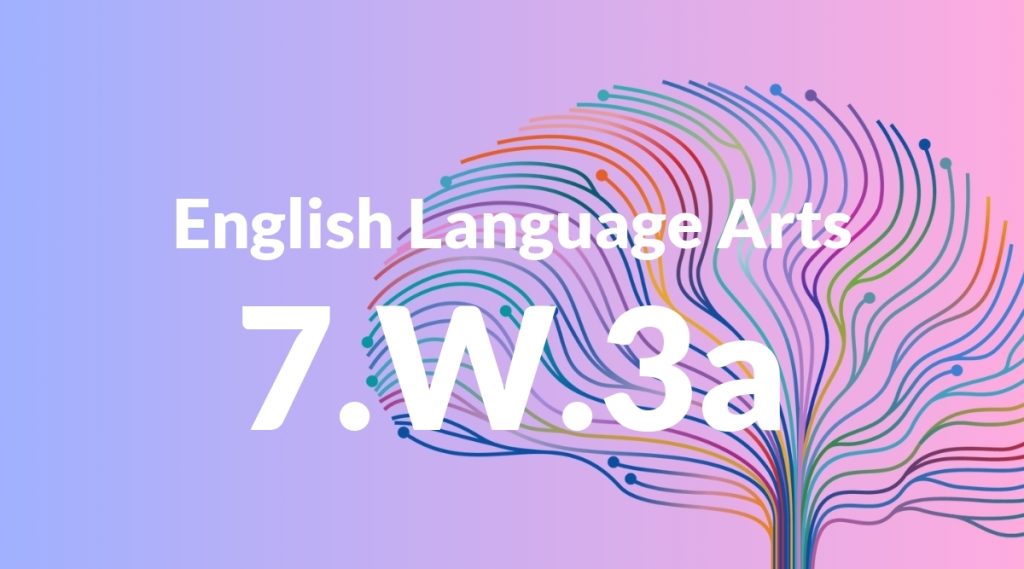Standard: 7.W.3a – Engage and orient the reader by establishing a context and point of view and introducing a narrator and/or characters; organize an event sequence that unfolds naturally and logically.
Grade level: Grade 7
Subject: English Language Arts
Domain: Writing
Teacher Overview
This standard focuses on helping students write narratives that are engaging and logically organized. It is crucial as it builds on prior narrative writing skills and prepares students for more advanced writing tasks. Students should be comfortable with basic narrative elements such as setting, characters, and plot. They should also have experience writing simple stories.
Mastering this standard will enable students to write more complex and engaging narratives, with multiple plot lines and well-developed characters.
Common Misconception 1
A common misconception is that a narrative can be effective without a clear sequence of events. This is incorrect because a well-organized sequence helps the reader follow the story easily.
Intervention 1
To address this, teach students how to use story maps and outlines to plan their narratives before writing.
Common Misconception 2
Another misconception is that characters in a story do not need distinct voices or perspectives. This is incorrect because unique voices make characters more believable and engaging.
Intervention 2
Encourage students to practice writing dialogues and monologues to develop distinct character voices.
Prerequisite Knowledge
Students should understand basic sentence structure, paragraph organization, and have experience with writing simple narratives or stories.
Subsequent Knowledge
After mastering this standard, students will be able to create more complex narratives with multiple plot lines and develop deeper characterizations and themes.
Instructional Activities
- Story mapping exercises
- Writing and peer-reviewing short stories
- Character development workshops
- Creating narrative timelines




